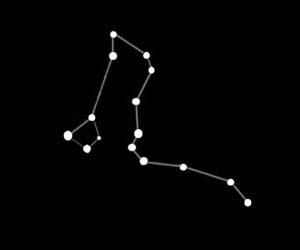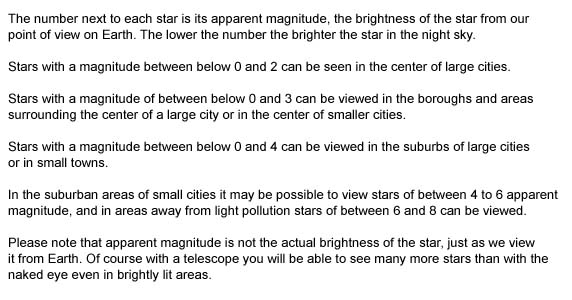|
|
Draco Constellation
Draco Constellation Facts
- The Draco constellation never sets below the horizon, as a result it is visible all year in the Northern hemisphere.
- Constellations that don't set are known as circumpolar constellations.
- Draco is one of five circumpolar constellations in the Northern hemisphere.
- The constellation of Draco is only partially visible in some northerly regions of the Southern hemisphere during the winter months.
- Despite being one of the largest constellations it is not particularly noticable in the night sky due to the dimness of most of its stars.
- Draco is Latin for dragon.
- A small galaxy known as the Draco Dwarf exists within the constellation, it's a satellite of our own galaxy, the Milky Way.
- The Cat's Eye Nebula is also situated within the boundries of the Draco constellation.
- Draco was one of the original constellations catalogued by the Greco-Roman astronomer Ptolemy in the 2nd century.
Constellation of Draco
 The serpent like constellation of Draco snakes its way across the night sky.
The serpent like constellation of Draco snakes its way across the night sky.
Draco the Dragon
 The constellation of Draco is associated with dragons from ancient Greek and Roman mythology.
The constellation of Draco is associated with dragons from ancient Greek and Roman mythology.
Main Stars in the Draco Constellation


Thuban
Also known as Alpha Draconis, Thuban is a white giant star around 300 light years from Earth, it has a mass around 4 times that of sun and a diameter around 7 times greater. Around the period of 4,000 to 2,000 BC Thuban was used by the ancients as the pole star as it was the closest star to the North Pole at that time. Edasich
Also known as Iota Draconis, Edasich is an orange giant star around 100 light years from Earth, it has a mass around twice that of Earth and a diameter around 11 times greater. Aldhibah
Also known as Zeta Draconis, Aldhibah is a blue giant star around 330 light years from Earth, it has a mass around three and a half times that of the sun and a diameter around two and a half times greater. Nodus Secundus
Also known as Delta Draconis, Aldib or Altais, Nodus Secundus is a yellow giant star around 100 light years from Earth, it has a mass around twice that of the sun and a diameter around 11 times greater. Grumium
Grumium is an orange giant star around 112 light years from Earth, it has a similar mass to the sun but is around 12 times larger in diameter. Eltanin
Also known as Gamma Draconis, with a luminosity around 500 times greater than that of the sun Eltanin is the brightest star in the constellation, it is an orange giant around 150 light years from Earth, it has a mass 70% greater than the sun and is around 50 times larger in diameter. Rastaban
Also known as Beta Draconis, despite having a luminosity around 1,00 times greater than that of the sun Rastaban is only the third brightest star in the constellation relative to how we view it on Earth, it is a yellow giant around 380 light years from Earth, it has a mass 6 times greater than the sun and is around 40 times larger in diameter.
Finding Draco

The chart on the left shows the position of Draco over most of the United States in mid-summer at 9 pm. This chart can also be applied to other areas of the Northern hemisphere such as Canada, the UK and Europe. In the Northern hemisphere Draco never sets below the horizon, as a result it is visible all year in the night sky. From January to March the constellation will first appear low in the horizon in a northerly direction at around 6 pm, as the night progresses it will become higher in the night sky before disappearing at day break around 7 am. From April to June Draco will first appear in a more north-easterly position at around 9 pm, at around 2 am it will be almost overhead before heading down towards the horizon in the north-west until day breaks at around 6 am. From July to September the constellation will be visible almost directly overhead at around 10 pm, it will gradually move lower towards the horizon in a north-westerly direction before day breaks around 5 am. From October to December it will appear high in the sky in the north-west at around 6 pm, by 2 am it will be almost directly north and low on the horizon, by day break the constellation will be in a north-easterly direction.

The chart on the left shows the position of Draco over Northern Australia in mid-winter at 9 pm. This chart can also be applied to more northerly areas of the Southern hemisphere. In Southern Australia and other southerly regions of the hemisphere Draco is not visible. Draco is only partially visible in the months of July to September, it will be appear low on the horizon in a northerly direction at around 7 pm, it will remain low on the horizon before disappearing below it at around midnight to 4 am depending on the month.